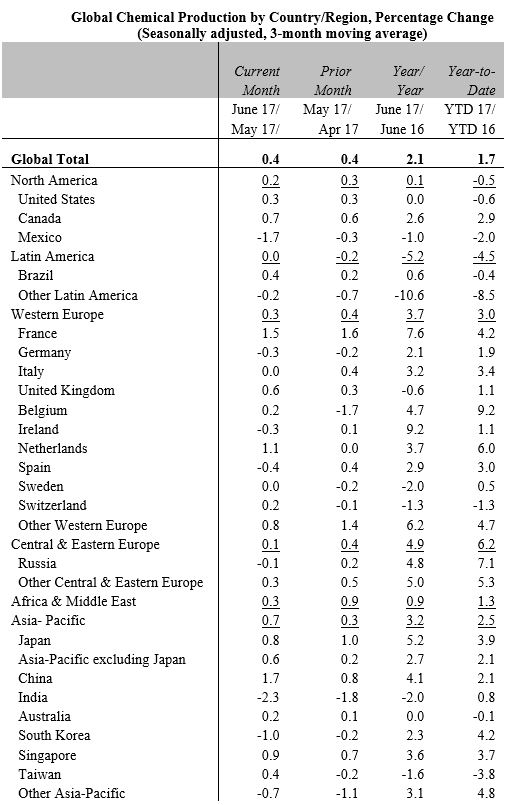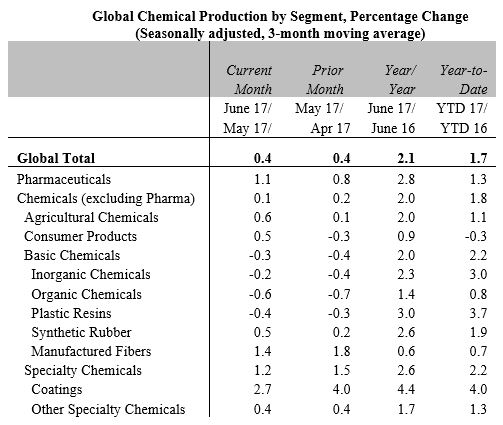
Global Chemicals Production Expanded During June
WASHINGTON – August 18, 2017 – The American Chemistry Council’s Global Chemical Production Regional Index (Global CPRI) shows that global chemicals production rose 0.4 percent in June, the same pace in May, as measured on a three-month moving average (3MMA) basis.


During June, production increased in North America, Western Europe, Central & Eastern Europe, Africa & the Middle East, and the Asia-Pacific region but was stable in Latin America. The Global CPRI was up 2.1 percent year-over-year (Y/Y) on a 3MMA basis and stood at 110.3 percent of its average 2012 levels in June.
During June, capacity utilization in the global business of chemistry rose 0.1 percentage points to 80.1 percent. This is off from 80.5 percent last June and is below the long-term (1987-2016) average of 88.8 percent.
RELATED Construction Employment Increases in May to Eight-Year High , American Chemistry Council Honors BASF with Award for Outstanding Employee Safety Initiative , Unparalleled Polyurethane Technologies Sought for Popular Innovation Award , New Study: Insulation Industry Important to U.S. Economy
Results were generally positive on a product basis during June, with gains in pharmaceuticals, agricultural chemicals, consumer products, synthetic rubber, manufactured fibers, coatings, and other specialty chemicals. Considering year-over-year comparisons, growth was strongest in coatings followed by plastic resins, pharmaceuticals, and synthetic rubber.
ACC’s Global CPRI measures the production volume of the business of chemistry for 33 key nations, sub-regions, and regions, all aggregated to the world total. The index is comparable to the Federal Reserve Board (FRB) production indices and features a similar base year where 2012=100. This index is developed from government industrial production indices for chemicals from over 65 nations accounting for about 98 percent of the total global business of chemistry. This data are the only timely source of market trends for the global chemical industry and are comparable to the US CPRI data, a timely source of U.S. regional chemical production.















